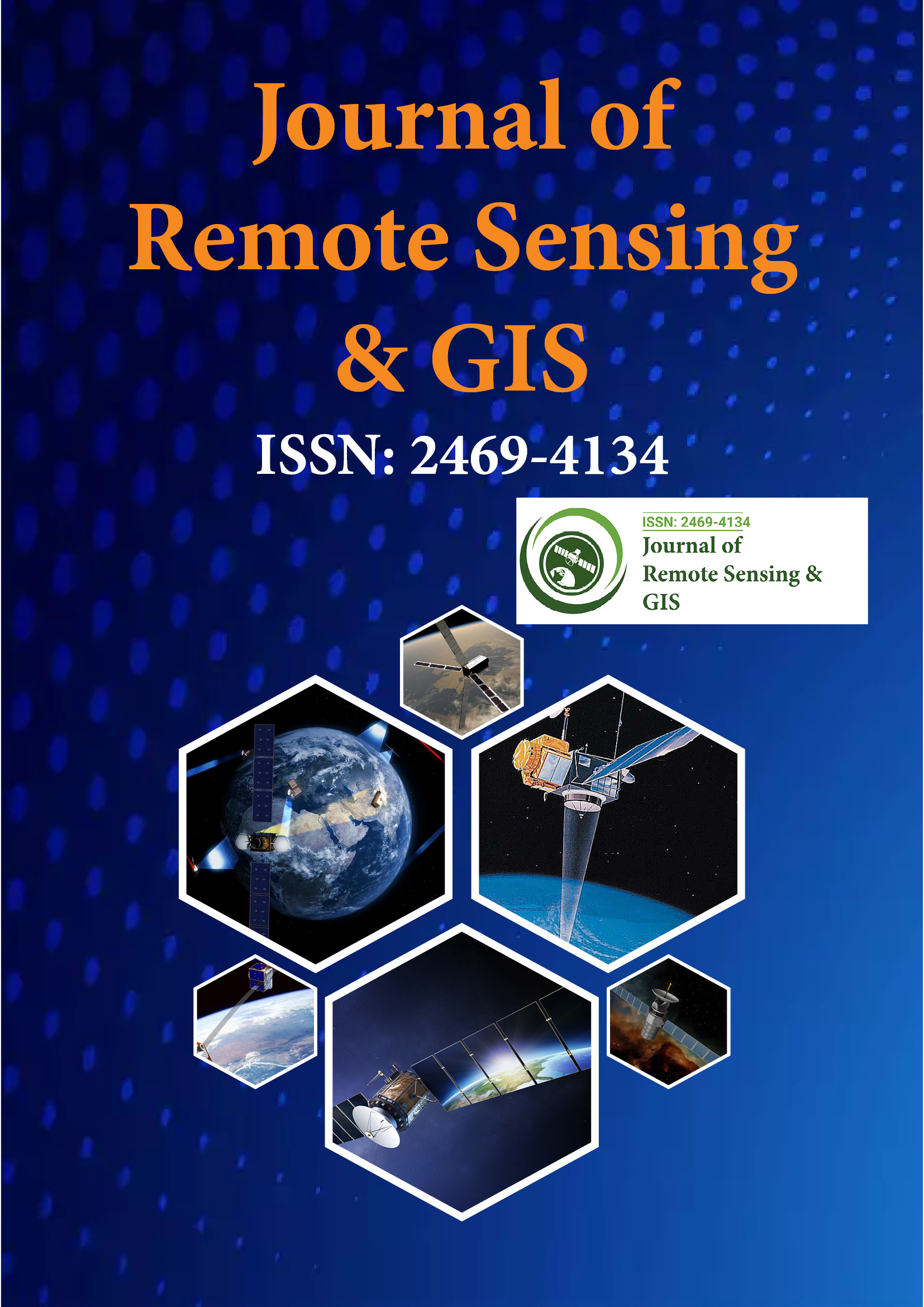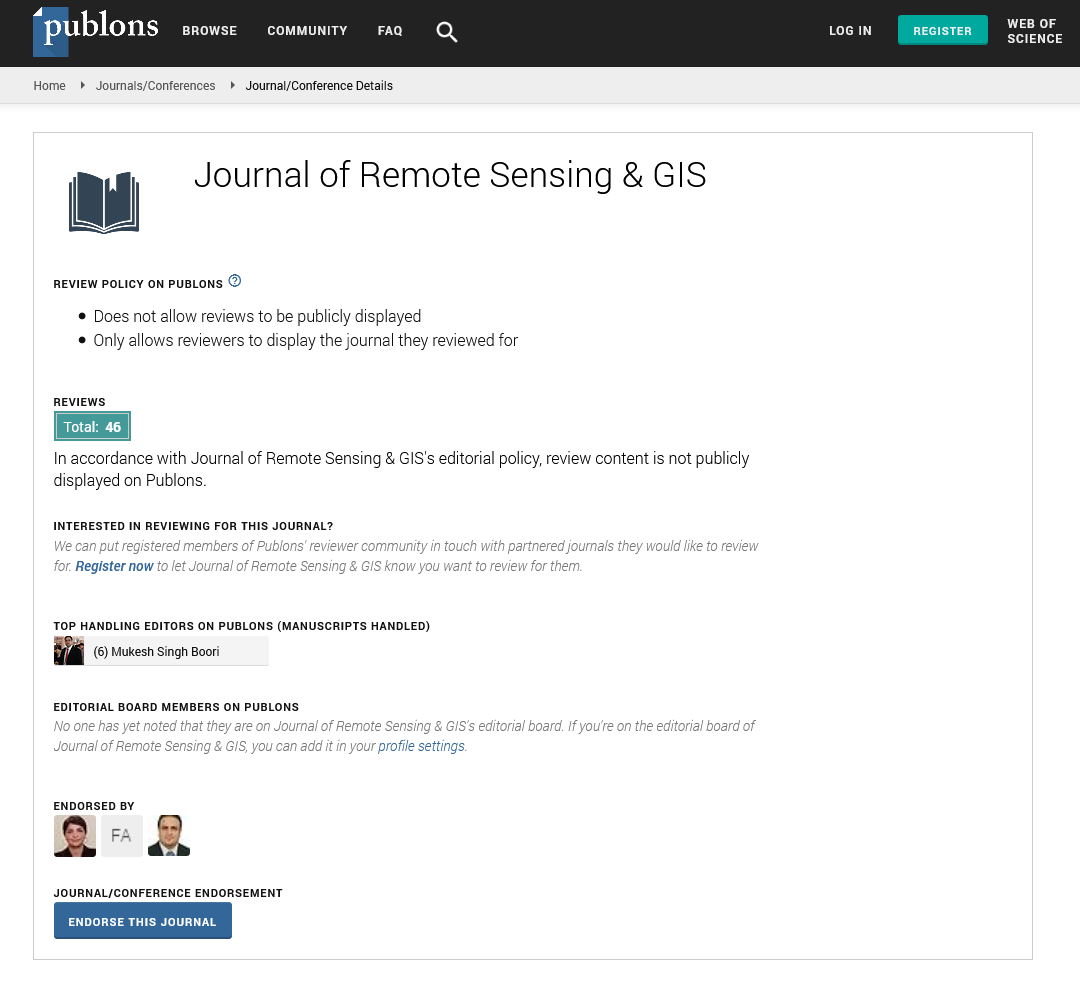Indexed In
- Open J Gate
- RefSeek
- Hamdard University
- EBSCO A-Z
- OCLC- WorldCat
- Publons
- International Scientific Indexing
- Euro Pub
- Google Scholar
Useful Links
Share This Page
Journal Flyer

Open Access Journals
- Agri and Aquaculture
- Biochemistry
- Bioinformatics & Systems Biology
- Business & Management
- Chemistry
- Clinical Sciences
- Engineering
- Food & Nutrition
- General Science
- Genetics & Molecular Biology
- Immunology & Microbiology
- Medical Sciences
- Neuroscience & Psychology
- Nursing & Health Care
- Pharmaceutical Sciences
Towards a science of GIS management - the GIS capability maturity model
2nd International Conference on GIS and Remote Sensing
October 02-03, 2017 Vienna, Austria
Gregory Babinski
King County GIS Center, USA
Posters & Accepted Abstracts: J Remote Sensing & GIS
Abstract:
Social utilization of geographic information science and technology typically depends on access to a geographic information system (GIS). The typical GIS is designed to meet the business needs of an organization. Typical business needs are met with GIS by enabling new types of business functions, making existing business functions more effective, or by making business functions more efficient. Conceptually, a modern geographic information system comprises four major categories of components: data, hardware, software, and people. Within each of these components, there are many subcomponents, with significant variability driven by the purpose of the GIS and the nature of the subcomponents available. Specific components and subcomponents are chosen and configured when a GIS is first designed, developed, implemented, and maintained. System design should be driven by the specific functionality required for the GIS to meet the business needs identified to justify the investment in the GIS. Advances in geospatial information science and related developments of commercial technology create an environment where the choice of components for an individual GIS presents continual architectural and operational challenges. The ultimate effectiveness of a GIS depends on the process maturity of the GIS staff responsible for operations and maintenance. The complexity and continualy evolving nature of a geographic information systems requires a conceptual model to successfully plan, operate, maintain, and assess it. This presentation will present the use of the GIS Capability Maturity Model for effective GIS management. Its potential to advance scientific GIS management will also be discussed.

